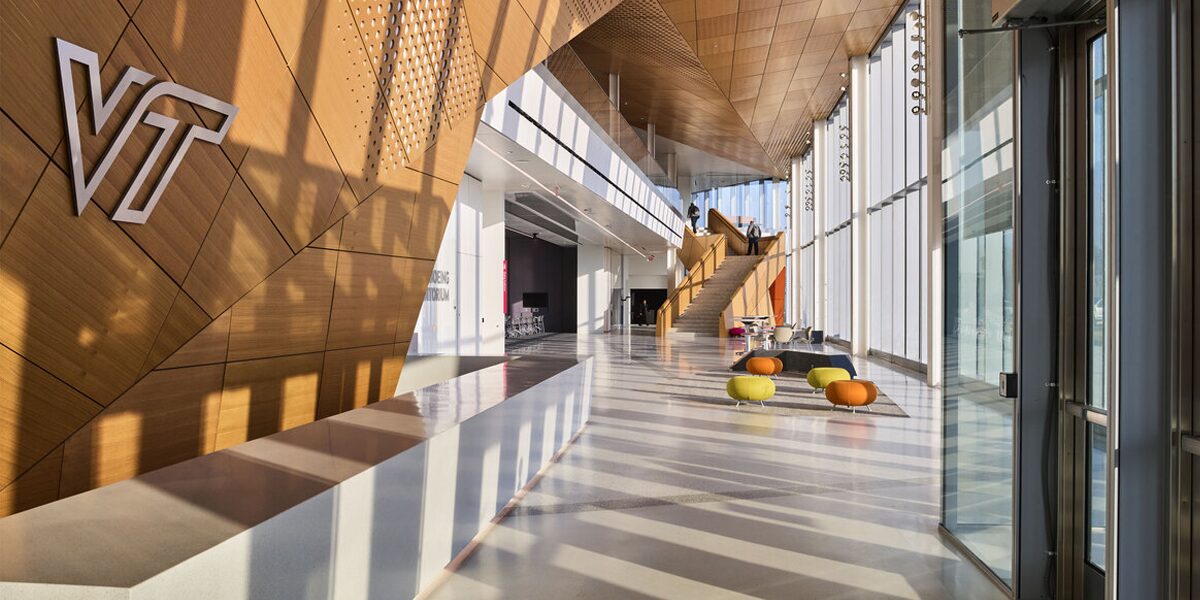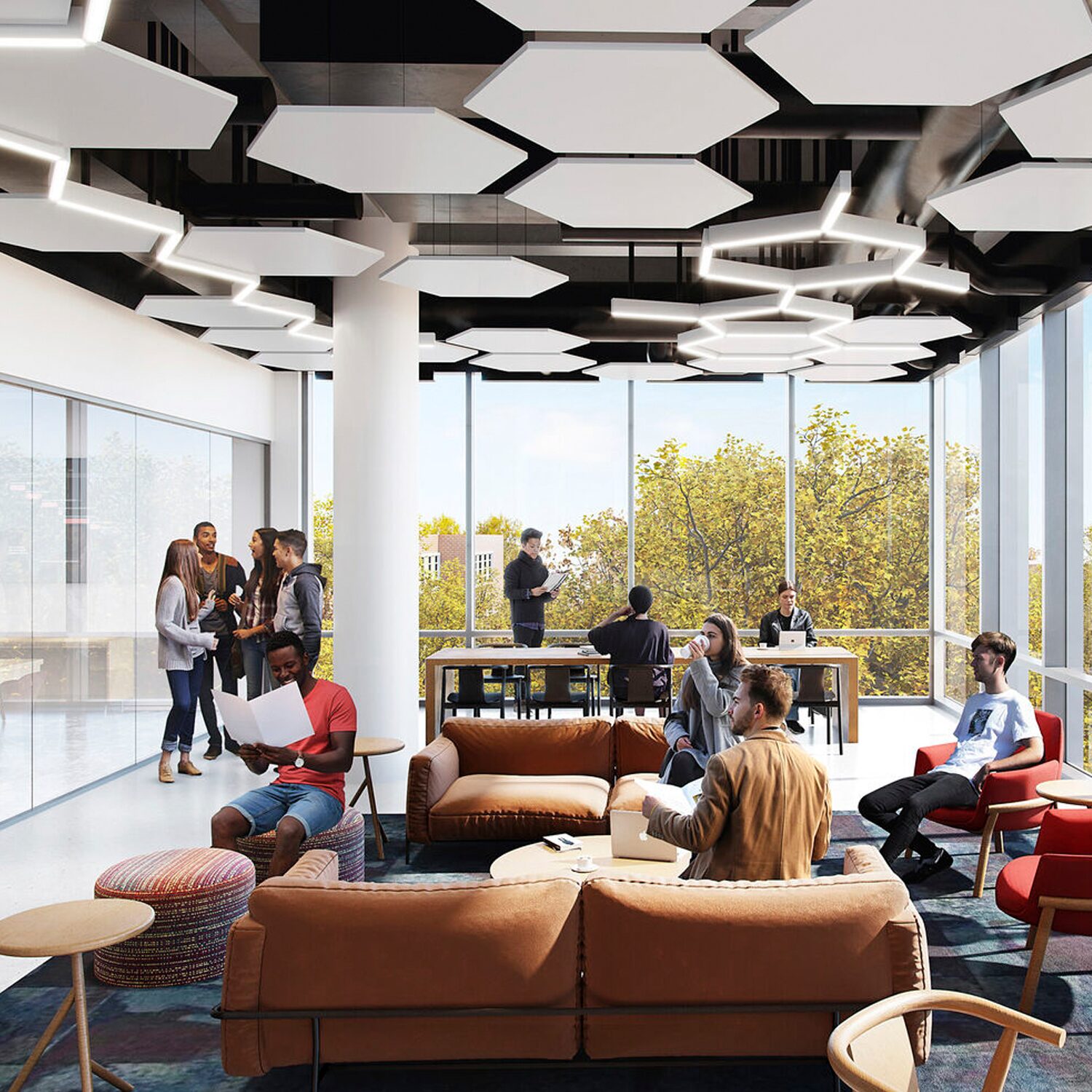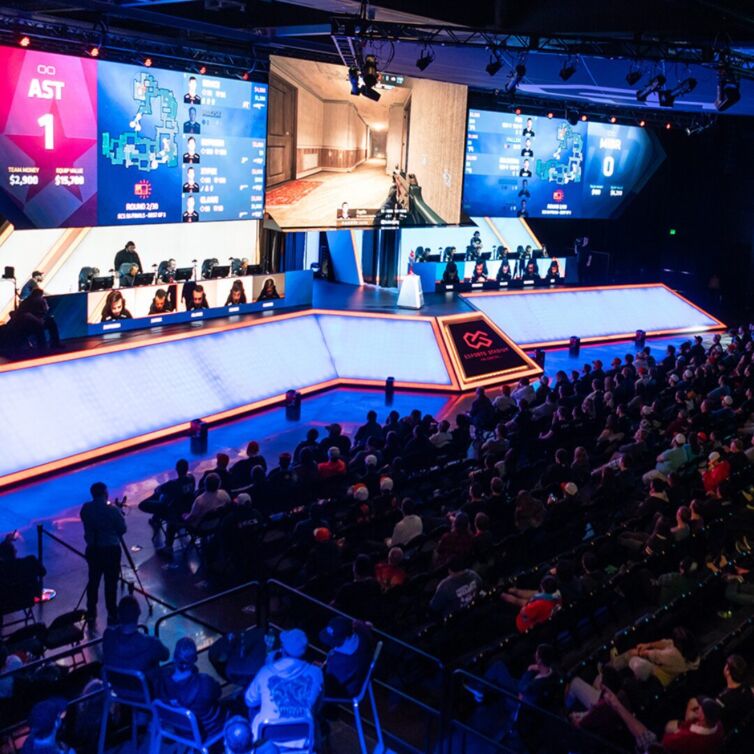Empowering the Next Generation of STEM Innovators
Incorporating Technology into the STEM Education Experience | 04.23.24
In the last decade, STEM research institutions have played an increasingly vital role in technological advancement.
Because of the increased need for scientists and researchers, STEM (science, technology, engineering, and math) occupations are projected to expand about five times faster than non-STEM roles until 2032.
Research done at colleges and universities has fueled growth in STEM and continues to play a crucial role in nurturing the future generation of scientists, entrepreneurs, and research development.
As the demand for STEM positions continues to rise, universities are establishing dedicated facilities tailored to the disciplines that support the upcoming wave of innovators.
As campuses nationwide prepare for new construction and renovations, they must be able to anticipate changes in research and learning methods. Many of these institutions have a rich history of innovation, so new technology must be functional and supportive of future leaders.
Virginia Tech Innovation Campus, First Academic Building
A consistent leader in research and innovation, Virginia Tech has recently launched their Innovation Campus. The first academic building, lovingly dubbed The Center of Next, is a testament to the University’s commitment to their students and the work they are producing.
The Center creates a centralized location for ground-breaking research focused on AI & Machine Learning, NextGen Technology, Quantum Architecture and Software Development, and Intelligent Interfaces.
The 11-story, 300,000GSF facility is a testament to the University’s dedication to unifying industry, government, and academia in dynamic project-based learning and research.
The first academic building provides graduate and doctoral students with access to 43 specialized research laboratory spaces and a multitude of private project rooms. On the first floor of the building, students have access to a fully immersive visualization laboratory, inspiring out-of-the-box thinking and expanding student perception of what is possible.
Ample research showcase space will be available on the ground floor of the building, providing space for ongoing research within the AR/VR lab, Smart Home Technology lab, a two-story Autonomy & Drone Cage, and the Systems Research Lab.
A mix of moderate, high, and non-intensive research laboratories are located throughout the facility, providing students with the space necessary for ongoing projects.


Instilling a foundation of mindfulness and mental health practices during their education will equip them with the tools to navigate any challenges they may face in the future.
Specialized spaces include an Additive Fabrication Lab, Cyber-Physical Systems Lab with an adjoining Testing Arena, a Visual Analytics Lab, and a large Mechanical Engineering bay.
Spaces like the Center of Next at Virginia Tech’s Innovation Campus are intentionally designed to inspire and propel students to greater heights.
The Virginia Tech Innovation Campus also prioritizes student well-being by incorporating mindfulness practices. Within the Center, a Brain Gym provides students with a space for low-tech play, allowing them to momentarily shift their focus away from their academics.
As these students progress into careers as scientists, researchers, and entrepreneurs, they will encounter ongoing stress and pressure in their fields. Instilling a foundation of mindfulness and mental health practices during their education will equip them with the tools to navigate any challenges they may face in the future.
Carnegie Mellon University, Robotics Innovation Center
In a monumental step for robotics, Carnegie Mellon University is launching their Robotics Innovation Center, a 150,000GSF advanced robotics research space.
Home to the College of Engineering – Mechanical Engineering & the School of Computer Sciences – Robotics Institute, the RIC gives students and researchers space for foundational research, testing, and development.
Located at Hazelwood Green – a former steel mill – the Robotics Innovation Center paves the way for Pittsburgh’s next industrial revolution.
Complemented by 1.5 acres of outdoor testing space, the RIC houses a 6,000GSF outdoor Drone Cage, a Motion Capture Laboratory, a 3-story High Bay testing and development space, and a 2,000GSF open-concept Wet Lab, among several other specialized spaces.
To allow for ease of testing, the high-bay space has a continuous vehicle pass-through and access to a loading dock. Additionally, a large pool is available for testing use, opening up testing and development to water, land, air, and space environments.
North Carolina State University, Integrative Sciences Initiative at Woodson Hall
North Carolina State University is constructing a brand-new facility to provide much-needed STEM teaching and research space on campus. Woodson Hall is a flexible, interdisciplinary sciences building with a focus on chemistry, biochemistry and biotechnology.

The facility embraces innovative models for learning and fosters an interdisciplinary approach to scientific exploration. Positioned at the heart of North Campus, this building transforms campus into a hive of scientific innovation and education.

At 153,000GSF, the ISI is home to classrooms, teaching and research laboratories, research-core facilities, collaboration space, and office space.
At its center will be three core labs that provide students with the space and materials needed to create new kinds of molecules, image & visualize molecules, and work to develop technologies that use these molecules to fast-track new developments.
The three core research themes include Molecular Biomimicry, Molecular Metabolism, and Accelerated and Predictive Technologies.
Research in Molecular Biomimicry aims to replicate biological molecules for medical and material applications. Molecular Metabolism explores biochemical processes to understand disease and health.
Accelerated and Predictive Technologies leverage AI, robotics, and computational tools to speed up molecular synthesis and analysis.
A Mega-Laboratory for 3rd and 4th year students has the capability to service up to 60 students in a wet-lab environment. Students will have access to ample prep space and hood alcoves for working with sensitive materials.
This building is set to transform the sciences at NC State, enhancing the way technology for STEM research and education is used in the classroom and throughout laboratories.
Due to lab sizes and the variety of research verticals, it has become imperative that STEM education has its own facilities on campus. This enables students to access the newest tech and collaborate with their peers throughout the building. It’s crucial for colleges and universities to equip STEM students with the tools they need for lifelong success and innovation.
Check out our portfolio of Science & Technology projects.





